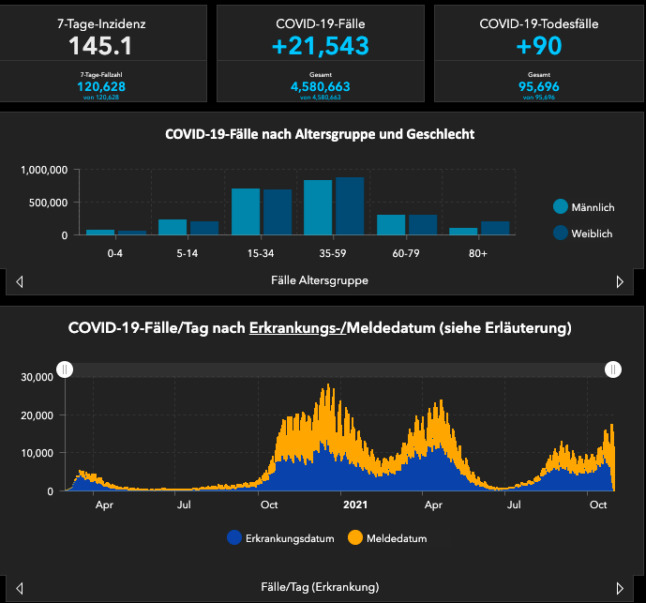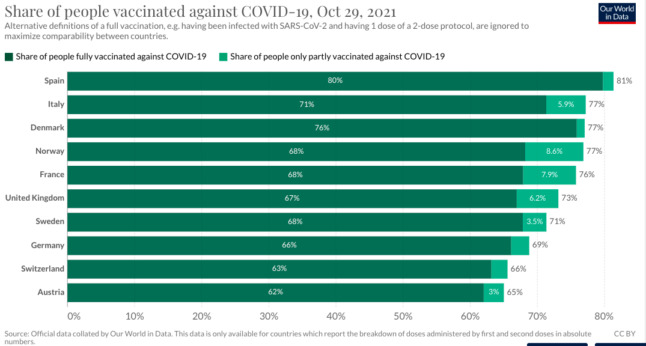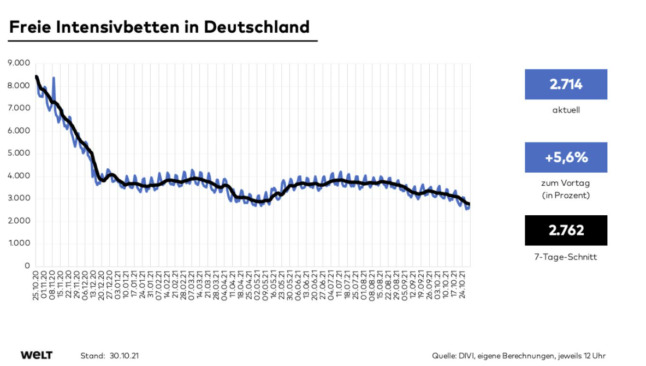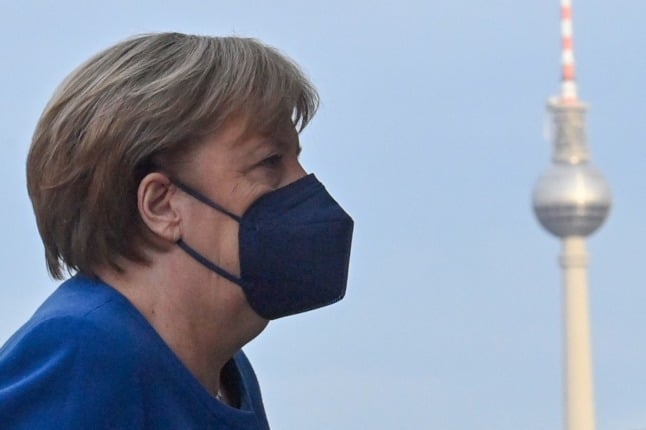Increasing numbers of hospitals’ admissions with coronavirus “worry me a lot”, Merkel told Sunday’s edition of the Frankfurter Allgemeine Zeitung newspaper.
“It should worry all of us,” she added, noting “again a certain recklessness” in Germany.
She defended the right not to be vaccinated but admitted at being “very saddened” that as many as three million Germans aged over 60 have still not had the jab.
“It could make a difference, for these people and the whole of society,” said Merkel, who steps down soon after 16 years in office.
Infections took off with the arrival of autumn and on Saturday the Robert Koch health institute (RKI) reported 21,543 new cases and 90 deaths over the previous 24 hours.

The Robert Koch Institute’s Covid-19 dashboard shows the number of cases by age group and gender (bar chart) and the number of cases per day according to the date of illness (blue) or reporting (yellow) (bottom chart).
Germany’s seven-day coronavirus incidence rate crossed 145 infections per 100,000 people on Saturday, after hitting 100 a week before for the first time since May.
The vaccination campaign is marking time with RKI counting 55.5 million Germans fully vaccinated against Covid, or 66.7 percent of the 83 million population.
Our World in Data puts the percentage of people fully vaccinated in Germany slightly lower at 66.1 percent, with the below chart showing the extent to which Germany is lagging behind many of its European neighbours

Health professionals have reported a new influx of infected people into hospital, mostly unvaccinated.
The president of the German society of hospitals Gerald Gass said the number of Covid patients entering hospital had jumped 40 percent in a week.
Intensive care wards had 15 percent more cases.
READ ALSO: Covid cases in Germany ‘significantly higher’ than last autumn, says RKI
READ ALSO: German hospitals see sharp increase in Covid-19 patients
“If this continues, we will soon have 3,000 patients in intensive care,” he told reporters. And that would lead to restrictions on the normal functioning of hospitals, such as delays for operations.
Data from the DIVI (German Interdisciplinary Association for Intensive Care and Emergency Medicine) and reproduced as a chart by Welt newspaper showed that the seven-day average of free intensive care beds had fallen further, to 2,762, the lowest level since the pandemic started.

In a Forsa survey carried out for the health ministry and published Thursday, 65 percent of unvaccinated respondents declared there was “no way” they would take a Covid jab and 23 percent were “reluctant”.
Some 89 percent said the risk of intensive care wards being overwhelmed had no influence over their readiness to be vaccinated.




 Please whitelist us to continue reading.
Please whitelist us to continue reading.
Member comments